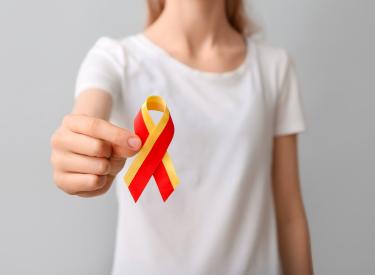
The Sober Truth
Marion put down the phone after hearing her husband’s command to prepare dinner for him and a group of business guests that evening. Now she would have to shop and prepare instead of going to the gym. As she stood there she felt the familiar, nearly overwhelming, urge to take some of her Percodans. The question is: Why?
Psychology can’t be reduced to the biology of the brain any more than biology (life) can be reduced to the chemicals that comprise it. Like other complex behavior, addiction has to be understood in psychological terms. Marion’s story provides a good illustration. Virtually all addictive acts are triggered by emotionally significant events, and Marion’s situation is typical. She felt that she was in a trap. For emotional reasons of her own (arising from her past) she was unable to defy her husband’s insistent demands. But she couldn’t simply comply with them, either. The helplessness she felt was too deeply enraging. She had to do something to feel less helpless. For her, that something had always been taking her pills.
I have found that virtually all addictive acts have this form. I have described many examples of this psychology that drives addictions in two books: Breaking Addiction: A 7-Step Handbook for Ending Any Addiction, and The Heart of Addiction. The psychology that drives addictions can be summarized in three elements:
- Every addictive act is preceded by a feeling of helplessness or powerlessness. The issues that precipitate these overwhelmed states of helplessness are unique to each person (correspondingly, treatment must be individualized toward understanding these issues). Addictive behavior functions to repair this underlying feeling of helplessness. It is able to do this because taking the addictive action (or even deciding to take this action) creates a sense of being empowered - of regaining control - over one’s emotional experience and one’s life. Drugs are particularly good for this purpose because altering (and thereby controlling) one’s emotional state is just what they do. However, non-drug addictions can be shown to work in exactly the same way, since they are also acts that work to change (and therefore reassert power over) how one feels. The reversal of helplessness achieved by these addictive acts may be described as the psychological purpose of addiction.
- States of overwhelming helplessness, such as the feelings that precipitate addictive acts, produce a feeling of rage. This rage is actually a normal response to the serious emotional injury of losing a sense that one is in control over oneself and one’s life. This rage is the powerful drive behind addiction. And we know something about great anger at powerlessness: it has the capacity to overwhelm a person’s judgment while he or she is in the throes of the rage. It is precisely the presence of this rage at helplessness that gives to addiction its most defining characteristics: great intensity with loss of usual judgment and seemingly irrational destructive behavior.
- In addiction, the rage at helplessness is always expressed via a substitute behavior (a displacement). If this feeling were expressed directly, there would be no addiction. For example, if a man were flooded with feelings of intolerable helplessness when he was unfairly criticized by his boss (because the criticism touched on old sensitivities, for instance), and he then charged into his boss’s office furiously complaining, there would be no addiction. But if he displaced his need to reverse his helplessness, and instead of charging in to the boss’s office he went home to drink, then his drinking would be driven by the same rage he would have expressed toward his boss. If drinking were the way he regularly dealt with states of overwhelming helplessness then he would have a repetitive, intensely-driven, apparently irrational drive to drink. We call such compulsive behavior an addiction.
Marion could not take the direct action of telling her husband to make his own dinner, or find another way to directly deal with her helplessness. Instead, she reacted with her usual emotional mechanism to deal with the emotional trap in which she lived. She suffered with an addiction.
Treatment for addictions has had a relatively poor success record in large part because the psychology of addiction has not been well understood. But once a person understands how his or her addiction works, the way is open to mastering it, as Marion did (her full story is in The Heart of Addiction). Just how to go about doing this can be described in a series of steps (they are detailed in Breaking Addiction). Here are some of the most important points.
Since the path toward addictive behavior always begins before, often hours or even days before it actually occurs, it’s crucial to identify the very first moment when the thought comes to mind. I call this the "key moment" in addiction. Sometimes doing this is pretty easy, of course. But the key moment can be harder to spot, because of the way we all have learned to manage difficult feelings: our emotional defenses. For example, a man who dealt with feeling overwhelmed by anxiety by becoming confused (“I can’t remember what the doctor told me”) was unable to identify these moments for what they were: the terrifyingly helpless feelings that always led to his addictive behavior. Fortunately, with some practice, it’s possible to know your own defensive style, whether it’s to withdraw, become defensively angry, rationalize why you’re doing things, or something else.
But what can you do when the addictive urge is upon you? The basic idea is fairly simple. If addictions are just displaced actions -- substitutes for doing something to directly deal with the trap -- then it is only necessary to undo this substitution and take a more direct action. For instance, a woman with food addiction regularly went home and binged on junk food when she felt left out and unimportant, as often happened to her in social settings. After she learned how her addiction worked, she was able to manage the next meeting of her pottery group very differently. She didn't have to do anything extraordinary; she just spoke up a bit about her concerns as a new member of the group, and when she got home she didn't need to eat. She had learned what made her addiction go and addressed it directly.
Another woman felt she had to comply with her husband's demands to create a dinner for many guests on short notice. Usually, she meekly accepted these demands, and then took her Percodans. But when she was able to come up with a more direct solution ("I know I should have just told him to make his own damn dinner, but at least I figured out another way out"), and ordered take-out Chinese food, her addictive urge vanished! There was no magic here. She had just taken a more direct action to deal with her helplessness trap, so she didn't need her addictive act.
Sometimes, though, finding the more direct action is more complicated, such as when there is no clear action that will solve the problem. In Breaking Addiction I described a man whose urge to use heroin became nearly overwhelming when he realized that his girlfriend was going to break up with him. Here, there was no clear direct action he could take to reverse the helplessness he felt. He needed to think about his helplessness trap in a different way: from the standpoint of what this loss meant to him, rather than just the loss of his girlfriend. I described how to go about refocusing on the deeper reasons for feelings, rather than only the external reality.
Next, I described long-term strategies. These involve not just knowing how to identify the key moment on the path to addiction and how to manage the urges when they occur, but how to anticipate when they will occur and thereby avoid even having to reach the stage of intense feelings. When you have reached that point, the addiction is broken.
My latest book, The Sober Truth, is a rigorous scientific review of studies looking at the effectiveness of current treatments with 12-step programs and the rehabilitation industry. My co-author and I found fascinating results. The most cited scientific articles are filled with major errors. Taken all together, they indicate that our current treatment system badly needs to be overhauled.
There has been a great deal of pessimism about breaking addiction. But we are embarking on a new era in understanding and treating this very common problem. There is now very good reason for hope.
Originally published in 2014.



